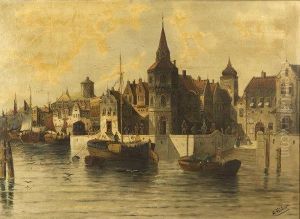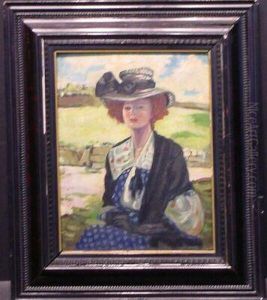Hubner Paintings
Julius Hübner was a German historical painter born on January 27, 1806, in Oels, Silesia, which is now Oleśnica, Poland. His talent for painting became evident at a young age, and he began his formal art education at the Royal Prussian Academy of Arts in Berlin. There, he studied under the guidance of prominent artists such as the classicist painter Karl Wilhelm Wach.
Hübner's style was heavily influenced by the Düsseldorf school of painting, a group that emphasized detailed historical and religious works with a romantic flair. In 1839, after spending some time in Italy to further his studies and being inspired by the Italian Renaissance, Hübner became a professor at the Kunstakademie Düsseldorf (Düsseldorf Art Academy), where he taught for many years. His position at the academy helped him to influence a generation of German painters.
Throughout his career, Hübner focused on historical and mythological subjects, bringing them to life with his strong sense of color and composition. Some of his notable works include 'The Death of Wallenstein' and 'The Mad Jane'. His paintings were characterized by their emotional expressiveness and attention to detail, qualities that garnered him considerable fame during his lifetime.
Hübner's works were exhibited across Germany and received numerous accolades. He was a key figure in the German art scene of the 19th century and contributed significantly to the period's artistic development. Despite facing criticism from those who favored a more modern approach to painting, Hübner remained committed to his style and continued to produce works that resonated with the public.
Julius Hübner passed away on November 7, 1882, in Loschwitz, near Dresden. His legacy lives on in the collections of various German museums, and his influence can still be seen in the works of later artists who were his pupils or who were affected by the Düsseldorf school's teachings.

